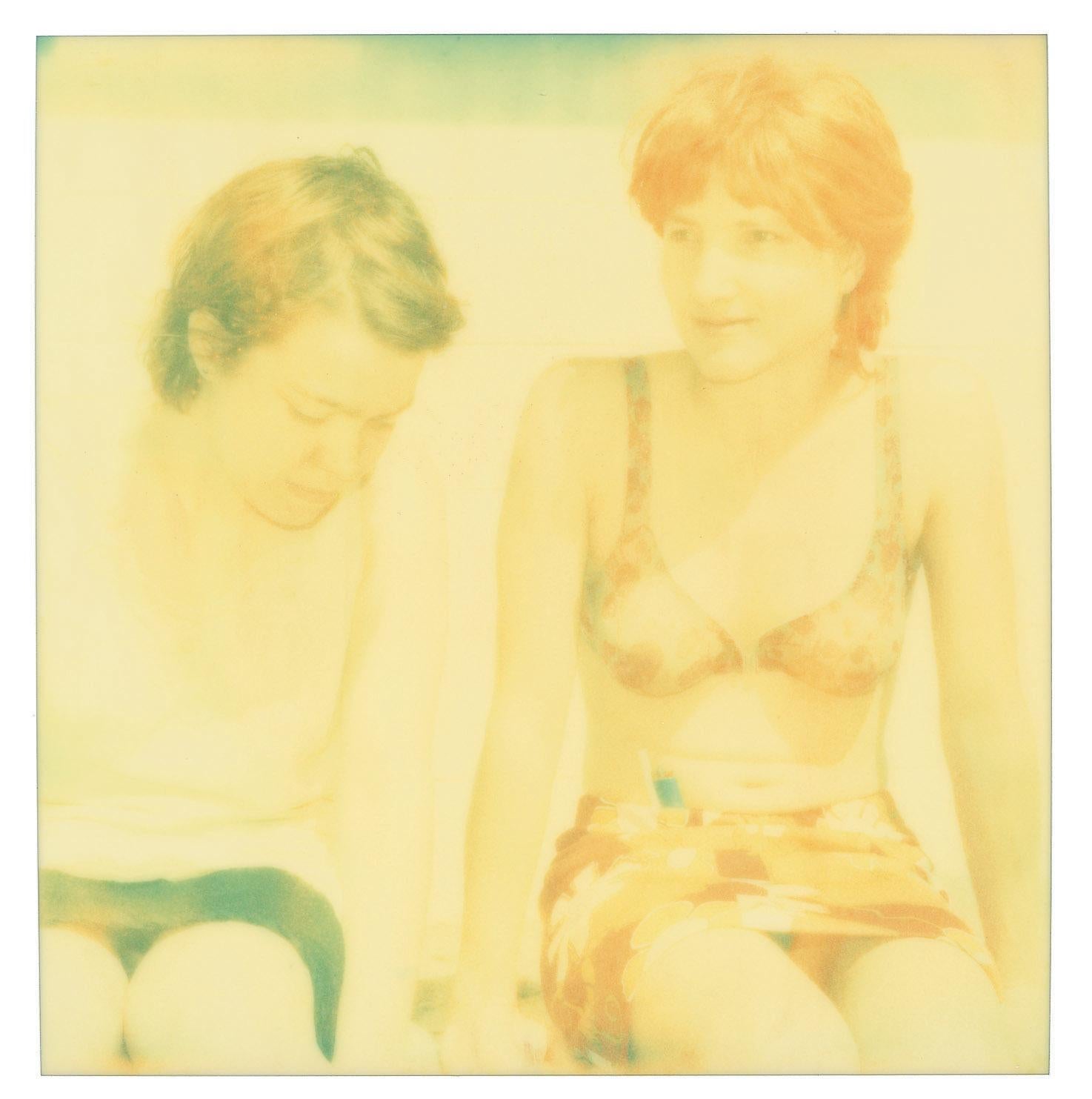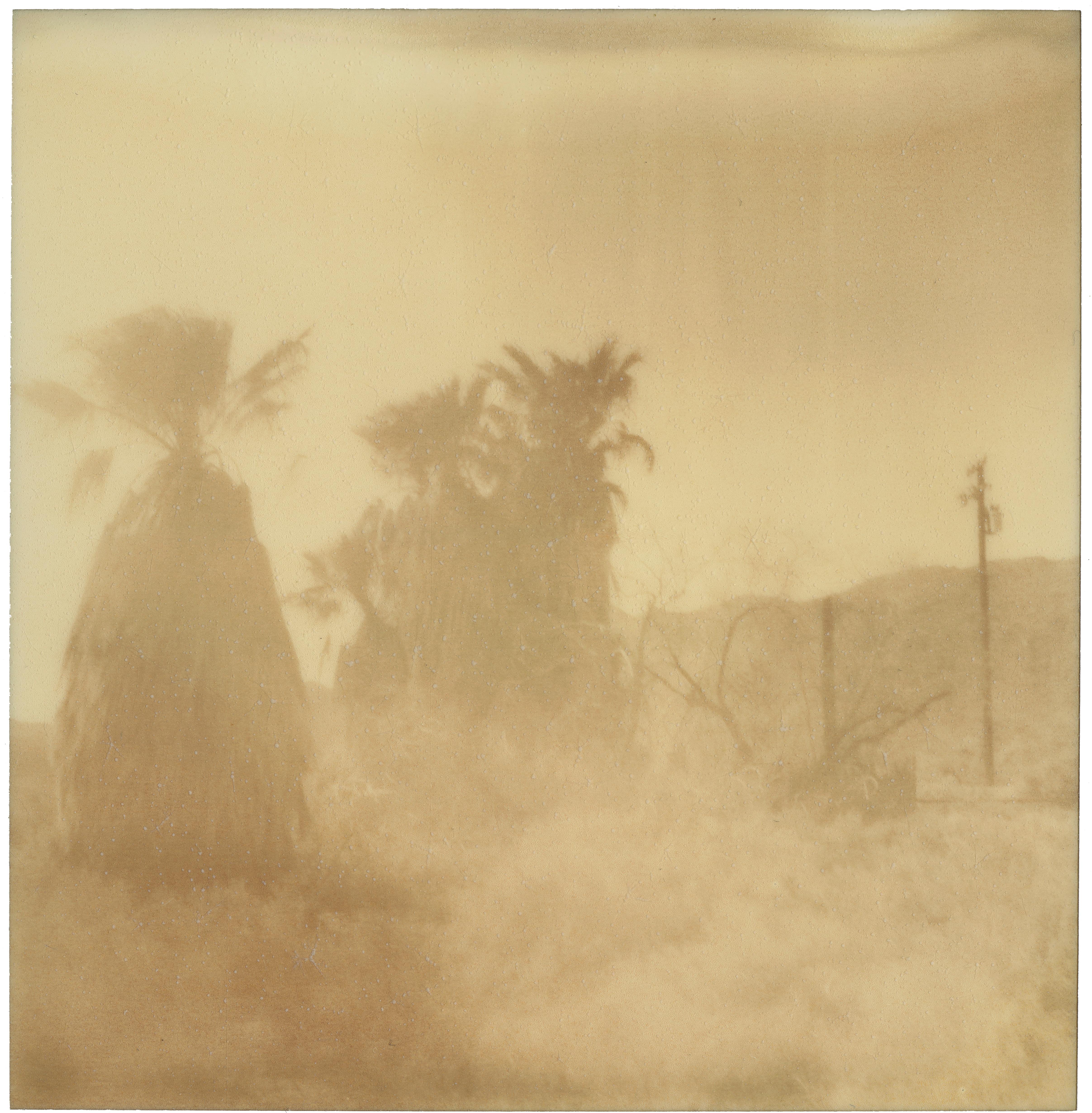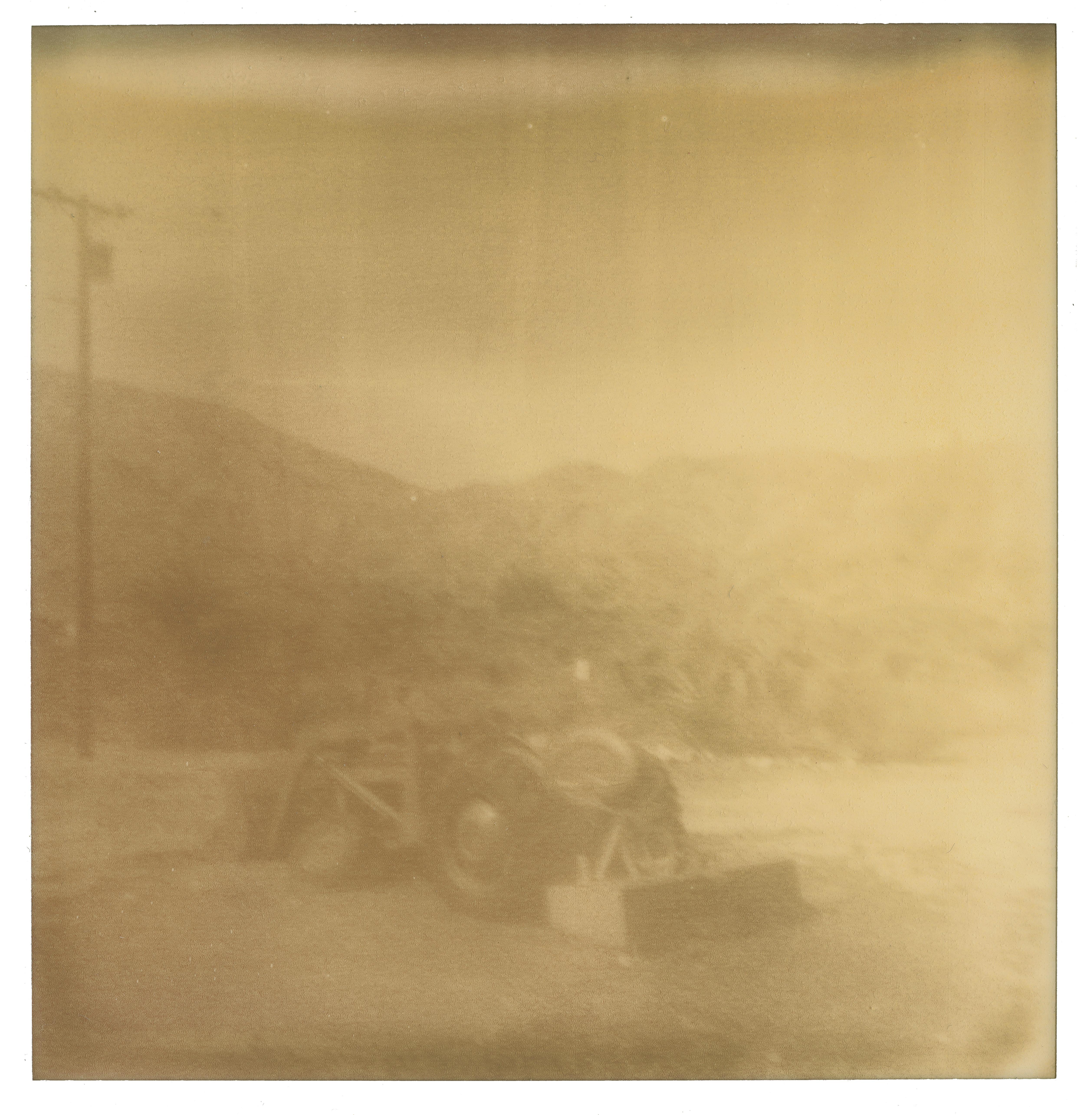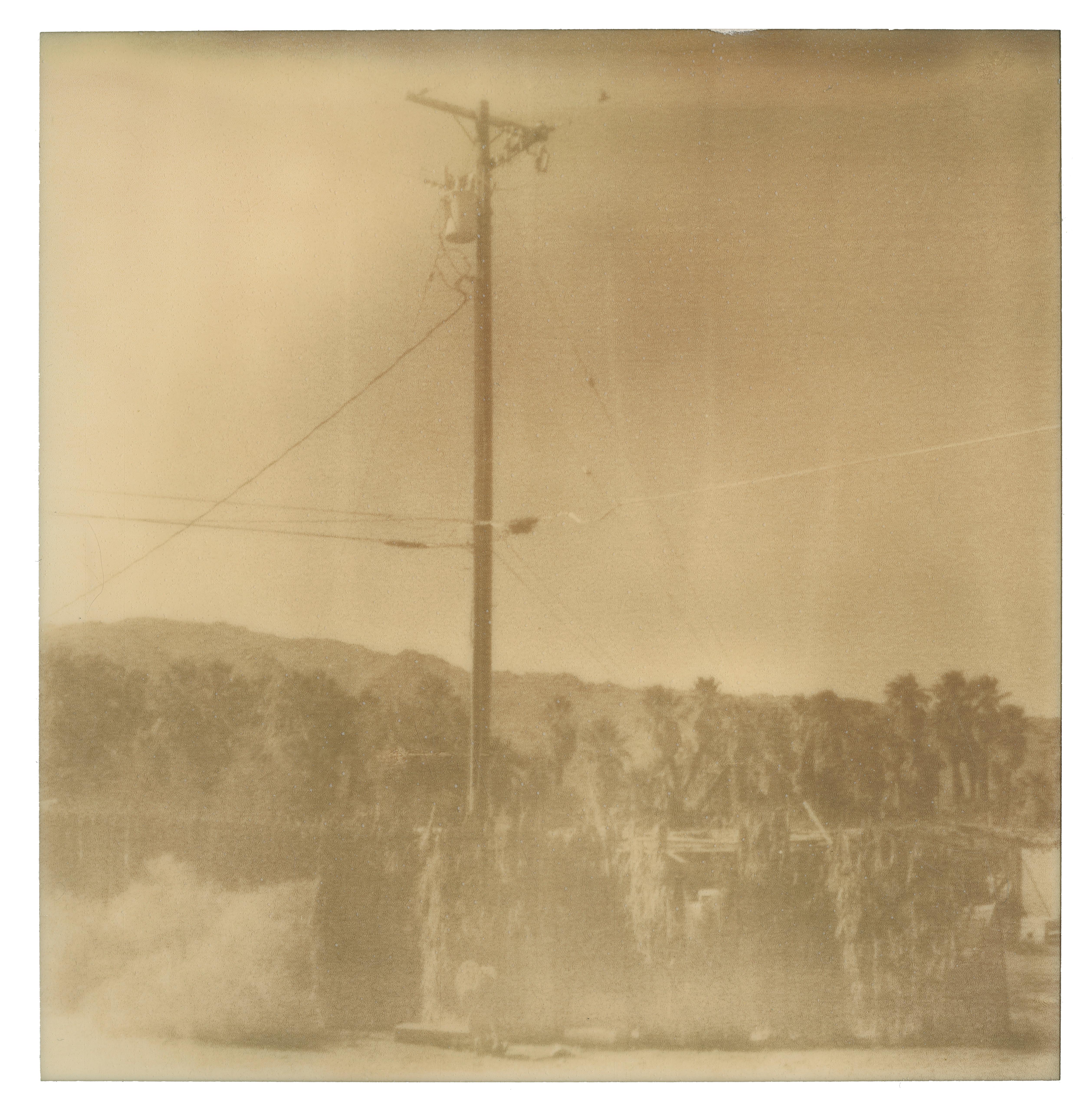Stefanie SchneiderWedding Shotgun (Haley and the Birds) - Contemporain, Figuratif, Polaroid, Jeune fille2013
2013
À propos de cet article
- Créateur:Stefanie Schneider (1968, Allemand)
- Année de création:2013
- Dimensions:Hauteur : 28 cm (11,03 po)Largeur : 38 cm (14,97 po)Profondeur : 1 mm (0,04 po)
- Support:
- Mouvement et style:
- Période:
- État:
- Adresse de la galerie:Morongo Valley, CA
- Numéro de référence:1stDibs : LU65239474682
Stefanie Schneider
- ExpéditionRecherche du devis...Expédition à partir de : Morongo Valley, CA
- Politique des retoursCet article peut être retourné sous 7 jours à compter de la date de livraison.
- Lila et Sam du film Stay avec Ewan McGregor, Naomi Watts.Par Stefanie SchneiderUne œuvre d'art tirée du film "Stay" de Stefanie Schneider. Stefanie a créé les illustrations pour les deux acteurs principaux Naomi Watts et Ryan Gosling dans le film "Stay" réalis...Catégorie
Début des années 2000, Contemporain, Photographie couleur
MatériauxPapier d'archives, Papier photo, C-Print, Couleur, Polaroïd
- Zabriskie Point IV - Contemporain, 21e siècle, Polaroid, PortraitPar Stefanie SchneiderZabriskie Point (Stranger than Paradise) - PARTIE IV - 2003 20x20cm, Edition de 10 plus 2 épreuves d'artiste. C-print d'archive, basé sur un Polaroid. Label de signature et ce...Catégorie
Début des années 2000, Contemporain, Photographie couleur
MatériauxPapier photo, Papier d'archives, C-Print, Couleur, Polaroïd
- 10525 - Stranger than Paradise, 125 x 125 cm chacun - Polaroid, 20ème siècle, couleurPar Stefanie Schneider10525 (Stranger than Paradise) 1999, 5 pièces, chacune de 128x125 cm plus 10 cm entre chaque impression, ensemble 128x640cm, Édition épuisée de 3. Épreuve d'artiste 1 sur 2, C-Prin...Catégorie
années 1990, Contemporain, Photographies - Portait
MatériauxPapier d'archives, Papier photo, C-Print, Couleur, Polaroïd
- 29 Palms, CA - basé sur un PolaroidPar Stefanie Schneider29 Palms, CA - 2010 40x40cm, Edition de 10, plus 2 épreuves d'artiste. C-print numérique, basé sur un Polaroid. Certificat et étiquette de signature. Inventaire de l'artiste n° 1...Catégorie
années 1990, Contemporain, Photographies - Portait
MatériauxPapier photo, Papier d'archives, C-Print, Couleur, Polaroïd
- The Ranch (29 Palms, CA) - basé sur un PolaroidPar Stefanie SchneiderLe Ranch (29 Palms, CA) - 2010 40x40cm, Edition de 10, plus 2 épreuves d'artiste. C-print numérique, basé sur un Polaroid. Certificat et étiquette de signature. Inventaire de l'a...Catégorie
années 1990, Contemporain, Photographies - Portait
MatériauxPapier photo, Papier d'archives, C-Print, Polaroïd, Couleur
- 29 Palms, CA - basé sur un PolaroidPar Stefanie Schneider29 Palms, CA - 2010 40x40cm, Edition de 10, plus 2 épreuves d'artiste. C-print numérique, basé sur un Polaroid. Certificat et étiquette de signature. Inventaire de l'artiste n° 1...Catégorie
années 1990, Contemporain, Photographies - Portait
MatériauxC-Print, Papier d'archives, Papier photo, Couleur, Polaroïd
- Tyler Shields, Pill, Photography 2020Par Tyler ShieldsSérie : Bouches Impression chromogène sur papier Kodak Endura Luster Toutes les tailles et éditions disponibles : 18" x 18" 30" x 30" 40" x 40" 60" x 60" 70" x 70" Éditions de 3 + 2 ...Catégorie
années 2010, Contemporain, Photographie couleur
MatériauxCéramique lustrée, Papier d'archives, Papier photo, C-Print
- Tyler Shields - The Girl with The Red Glove, photographie 2021, imprimée d'aprèsPar Tyler ShieldsSérie : Fiction historique Impression chromogène sur papier Kodak Endura Luster Toutes les tailles et éditions disponibles : 15" x 20" 22.5" x 30" 30" x 40" 45" x 60" 56" x 72" 63" x...Catégorie
années 2010, Contemporain, Photographie couleur
MatériauxPigment numérique, Céramique lustrée, Pigment d'archive, Jet d'encre, La...
- Tyler Shields - La fille dans la voiture rouge, photographie 2021, imprimée d'aprèsPar Tyler ShieldsSérie : Fiction historique Impression chromogène sur papier Kodak Endura Luster Toutes les tailles et éditions disponibles : 15" x 20" 22.5" x 30" 30" x 40" 45" x 60" 56" x 72" 63" x...Catégorie
années 2010, Contemporain, Photographie couleur
MatériauxCéramique lustrée, Papier, Encre qualité archive, Papier d'archives, Pap...
- Isabelle Van Zeijl - All For Love, Photography 2020, imprimée d'aprèsPar Isabelle Van Zeijl↵Tout pour l'amour C.I.C.C. sur papier Fuji Collectional : FLOWER LOVE Taille unique : 40,5 x 40,5 Édition de 8 + 2 épreuves d'artiste L'AMOUR DES FLEURS Les roses réchauffent le cœ...Catégorie
années 2010, Contemporain, Photographie couleur
MatériauxEncre qualité archive, Pigment numérique, Pigment d'archive, Numérique, ...
- Isabelle Van Zeijl - Revive, Photography 2020, Imprimé d'aprèsPar Isabelle Van ZeijlRaviver C.I.C.C. sur papier Fuji Collectional : LA RENAISSANCE DE LA FLEUR HOLLANDAISE Taille unique : 62,2 x 56,7 Édition de 8 + 2 épreuves d'artiste LA RENAISSANCE DE LA COLLECTIO...Catégorie
années 2010, Contemporain, Photographie couleur
MatériauxEncre qualité archive, Pigment numérique, Pigment d'archive, Numérique, ...
- Isabelle Van Zeijl - renaissance, photographie 2020, imprimée d'aprèsPar Isabelle Van ZeijlRenaissance C.I.C.C. sur papier Fuji Collectional : LA RENAISSANCE DE LA FLEUR HOLLANDAISE Taille unique : 62,2 x 56,7 Édition de 8 + 2 épreuves d'artiste LA RENAISSANCE DE LA COLLE...Catégorie
XXIe siècle et contemporain, Contemporain, Photographie couleur
MatériauxEncre qualité archive, Pigment numérique, Pigment d'archive, Numérique, ...






